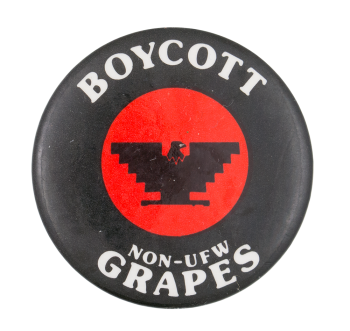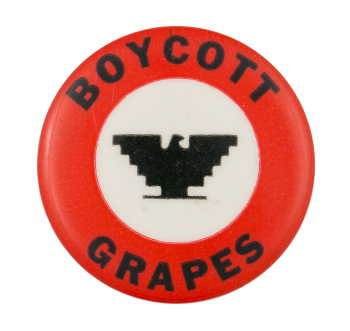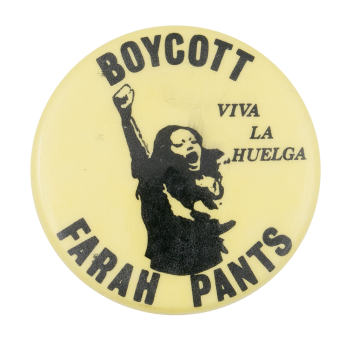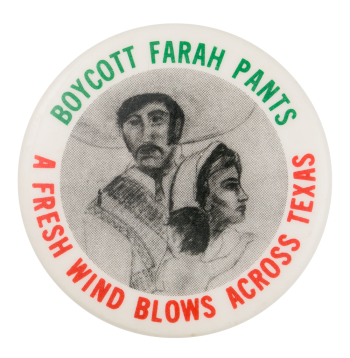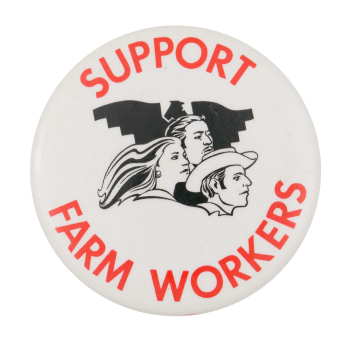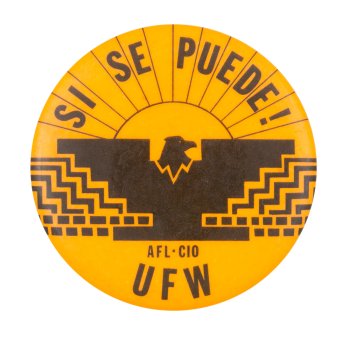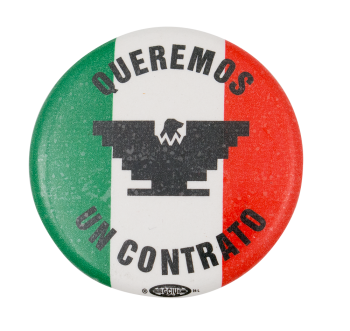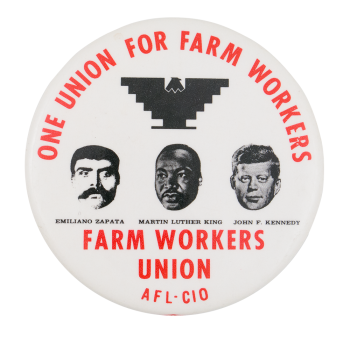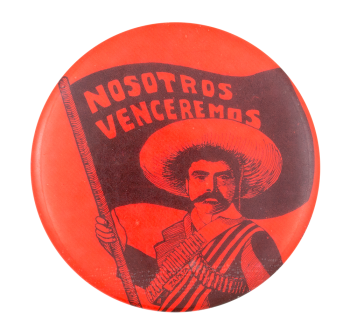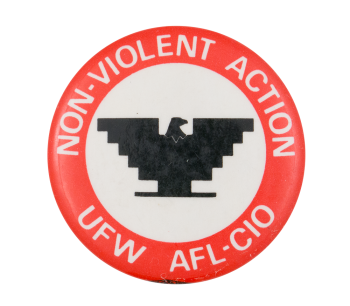Boycott Non-UFW Grapes Black
| Category | |
|---|---|
| Additional Images | |
| Sub Categories | |
| Text on Button | Boycott Non-UFW Grapes |
| Image Description | White text on black background with a red center and a black eagle symbol. |
| Curl Text | (union bug) |
| Back Style | |
| The Shape | |
| The Size | |
| Year / Decade Made | |
| Additional Information | The Delano Grape Strike was a labor strike in California that began in September of 1965, and lasted for more than five years. The striking workers, led by Cesar Chavez and others, formed the United Farm Workers and demanded wages equivalent to the federal minimum wage. Through grassroots efforts, including consumer boycotts of non-union grapes, the United Farm Workers succeeded in reaching a collective bargaining agreement with the grape growers in July 1970. |
| Catalog ID | CA0483 |

